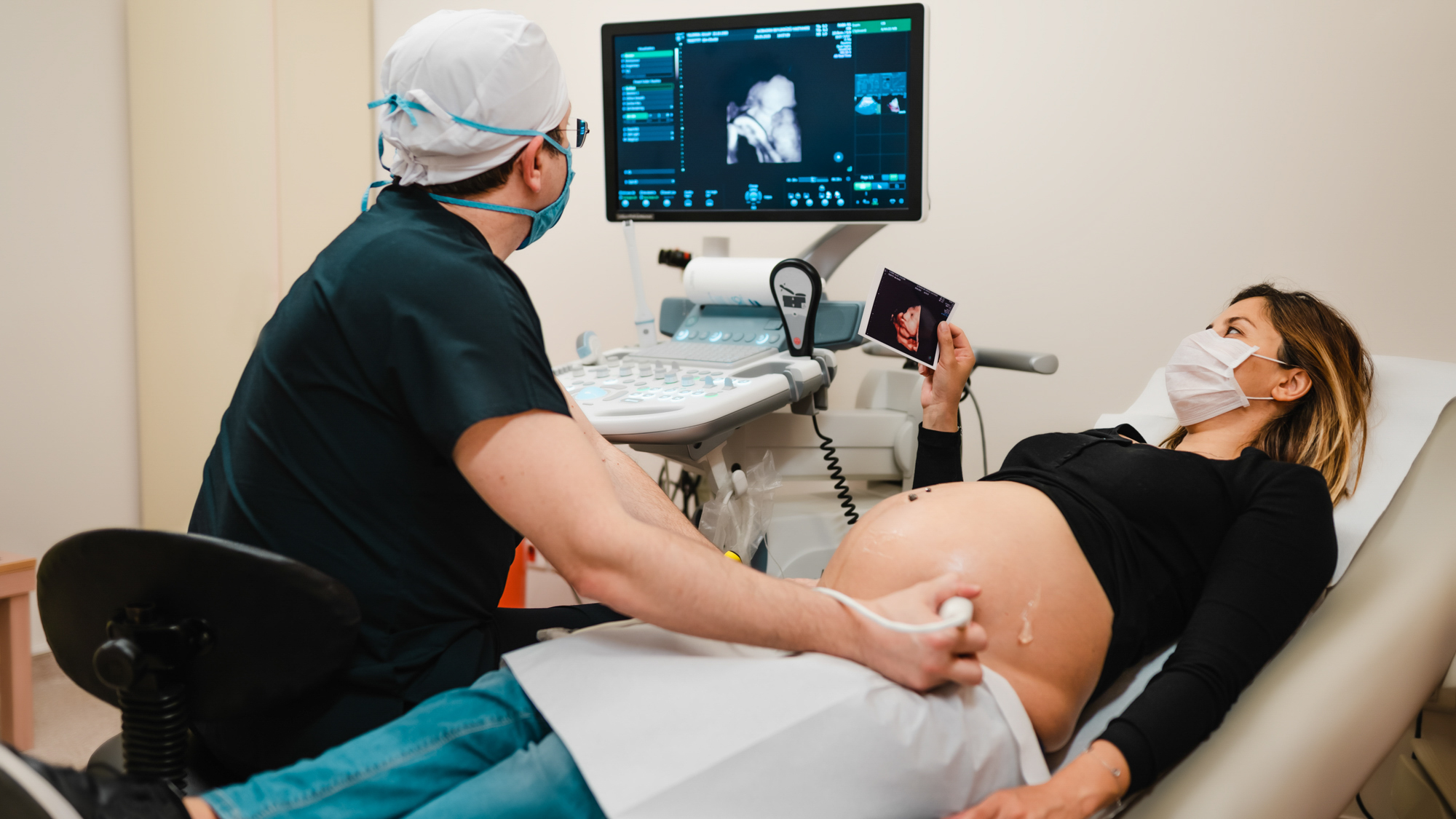Podcast
Status Change Missed, Consultation Flawed, and the Patient Loses Baby
Dec 23, 2019

This podcast is an episode of Med Mal Insider. You can find other episodes and subscribe using the links to the right.
Commentator
- Thomas Beatty, MD
The following case is based on closed claims in the Harvard medical system. Some details may be changed to mask identities.
In this case, communication between the primary provider and a phone consultant needed more clarity…and changes in the patient’s status needed a stronger response…if a tragic outcome had any chance of being averted.
A morbidly obese 26-year-old in the 41st week of her first pregnancy was admitted to the Labor & Delivery unit, 3 cm dilated. She complained of a sore throat. Her prenatal history included a positive Group B Strep test. The initial external fetal heart rate (FHR) tracing was Category 1, the least concerning; however, the nurse noted that the FHR recording was complicated by the mother’s size.
Twelve hours later, during second stage labor, the patient developed a temperature of 100.5°; she was given Ampicillin and her nurse midwife consulted with the on-call obstetrician (by phone) regarding a potential viral syndrome. The obstetrician did not examine the patient, nor was he contacted again during the course of labor.
The patient experienced 19 hours of protracted labor, with no cervical change for eight hours, and a Category 2 FHR tracing. Eventually, membranes were artificially ruptured, which revealed meconium-stained fluid.
After two and half hours, a female infant was delivered vaginally with Apgars of 1/3/5. She died shortly after birth. Her cultures were negative; an autopsy confirmed hypoxic ischemic encephalopathy.
The mother sued the OB care team, including the nurse midwife, obstetrician, and another nurse. The family alleged that a delay in the treatment of fetal distress and improper management of labor led to the baby’s death.
Experts who reviewed the case for the defense team concluded that a more aggressive response to non-reassuring FHR tracings, such as consideration of cesarean delivery, would have been appropriate. Coupled with a delay in the diagnosis and treatment of chorioamnionitis, the case was settled in the high range.
To discuss the patient safety and risk management aspects of this case, we are joined now by Dr. Thomas Beatty. Dr. Beatty is Chair of Obstetrics and Gynecology at Newton-Wellesley Hospital.
Q) Thank you for joining us, Dr. Beatty. You’re familiar with the case. Can you tell us what you see start to go wrong as the woman arrives at the hospital? And do you see themes that might affect a lot of specialties?
A) Yes. So, I think the important themes are to appreciate warning signs as they evolved during the course of the labor. So, obstetrics relies on team-based care. Often, as in this case, the team involves a labor nurse, a certified nurse midwife, and a physician who is on site acting as a consultant when requested by the certified nurse midwife.
Q) Okay.
A) It’s important to have a risk assessment when patients enter in labor, and in this case the patient’s primary risk factor was her high BMI, which was a challenge as was caring for and monitoring both the mother and baby during the course of the labor. Yes, she was positive for group B Strep but that’s a risk we understand, and she was treated appropriately for that. Additionally, it was flu season, and she came in complaining of a sore throat, and as we see was ultimately treated due to a low-grade fever with an anti-flu medication.
Q) And one of the things we start to see a little bit is that there’s a difficulty or inadequate communication between certified nurse midwife and the obstetrician. Why do you think that was happening? How can we sort of look at that?
A) So, collaboration and consultation happens very commonly in obstetrics. it’s important for each party to understand the parameters of the consultation and to be clear, is this a one-time consultation? Is this a consultation where I would like the consultant, in this case the obstetrician, to follow the patient along with me, or is this a consultation where I ultimately plan to turn over the care or transfer the care to the obstetrician. Now, we know in this case the only consultation was by phone regarding the low-grade fever and starting antiviral medication, and then also another phone consultation when chorioamnionitis was diagnosed. It would have been better for the — both the person requesting the consultation and the consultant to have understood more of the context of the consultation, that is, what was the patient’s course of labor up to this point, what were the other concerning factors if any. As we know, this patient had a very long protracted labor. There were changes both in the mother’s condition, the development of the low-grade fever and then the overt fever with chorioamnionitis, the changes in the fetal heart rate tracing that occurred with the passage of meconium that ultimately led to the devastating outcome for this infant and for the family.
Q) How do you determine that the doctor needs to see the patient?
A) So, each obstetrical unit, each team, should have parameters to help them determine when its appropriate to widen the team of caregivers who are taking care of the patient, and that will vary based upon each patient’s presentation and condition, but it is important to have a shared mental model and agreed upon parameters that would trigger widening that circle to bring in a third party, in this case an obstetrician. But one could imagine if an obstetrician was caring for this patient it could at times be appropriate to widen that circle and bring in another physician on the labor unit to provide input and perspective. It’s very important, and we know that it’s for all of us taking care of women in labor, that we’re at risk of losing that situational awareness of focusing on the here and now, the moment to moment, the hour to hour changes in labor, and are at risk of losing the overall perspective of where is this labor going. She arrested, or her labor stopped, at 6 cm in active labor for 8 hours, which is a long, long time, and it’s always helpful to bring in another party to help you look at that context and make appropriate decisions as this patient’s risk started to increase during labor.
Q) So, it’s almost not like a doctor comes in, or a new doctor comes in and sees something different—it’s sort of like just forcing the reconsideration of the situation.
A) Yes, that’s right. Yes, I think it’s more often—now, certainly sometimes a new physician can come in and point out the importance of some information that may not have been appreciated by the team, but more often it’s the person coming in and providing the context and the perspective, the overall picture for the team.
Q) There were a number of unresolved concerns in the case that was a feature of the malpractice case. So, you’ve got all of these concerns, but they weren’t really resolved. So you’ve got maternal fever, fetal tracings that didn’t look reassuring, stagnate dilation—what does that mean for the patient and the care team?
A) So, it’s important to look at the patient’s course of labor and then to evaluate the labor as risk factors may develop… Each of those is a risk factor that’s important to evaluate in the context of her labor and also in the context of taking action. You know, often we will be very patient for a woman having her first child when labor is going slowly as long as there are no additional concerns. The fetal heart rate tracing is normal, there’s no fever, the fluid is clear. In this case, the patient started off that way but then developed risk factors that one would expect to prompt concerns and either more intensive monitoring or even earlier delivery.
Q) And sometimes we see that change in status, and that change in status doesn’t get appreciated as much as it should. Is there a technique or a practice that you could suggest that would keep people from missing those changes?
A) So, one technique is to think about briefings, frequent briefings, based on certain thresholds or certain parameters. Examples might be an arrest of labor where labor stops progressing for a certain amount of time, development of chorioamnionitis, a category 2 tracing with decelerations that persist beyond an hour as an example, or a certain amount of time, having structure criteria that would prompt the team to have a briefing together to go over those factors and then come up with a definite plan for monitoring, treatment, and reassessment after a certain amount of time.
Q) Thank you, Dr. Thomas Beatty, Chair of Obstetrics and Gynecology at Newton-Wellesley Hospital. I’m Tom Augello.
About the series
Even in the safest healthcare setting, things can go wrong. For almost 50 years, CRICO has analyzed MPL cases from the Harvard medical community. Join our experts as they unpack what occurred and the lessons learned for safer patient care from the causes of these errors.
Episodes
$1.5 Billion in Miscommunication: Medmal Data Report Finds Opportunities

Case Dismissed! Every Medical Defendant’s Dream Still Holds Some Nightmares

Expert: Communication Is Top Fix for Prostate Care Allegations


